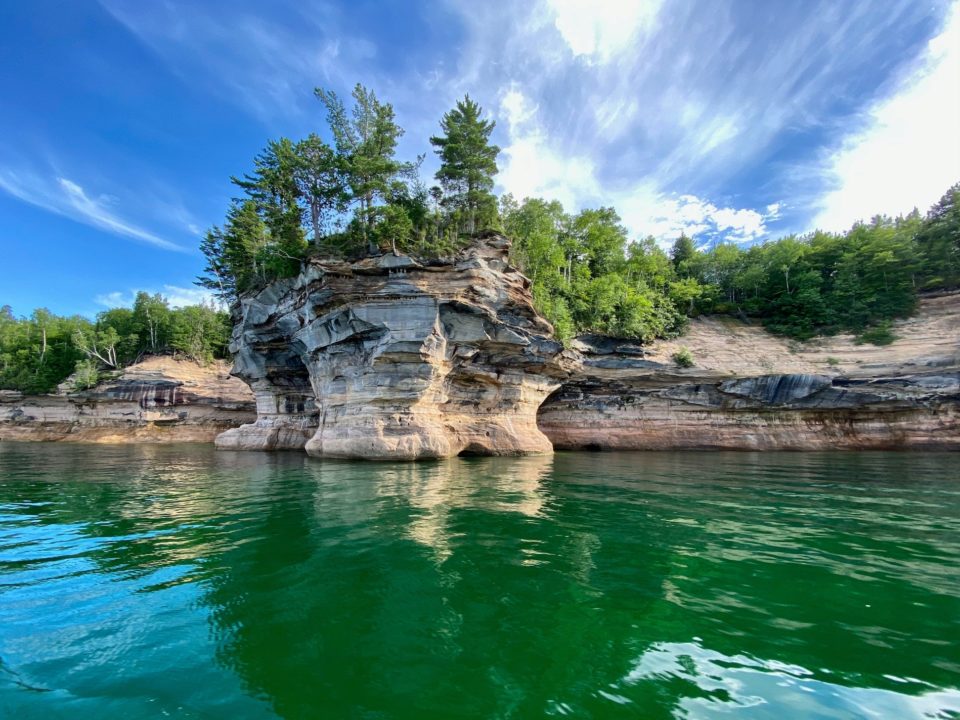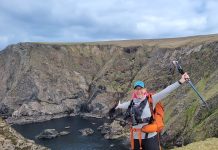For the second summer in a row, Americans have set their sights (and record numbers) on visiting the country’s national parks.
But not everyone has flocked to these wild, beautiful—and popular—places. Others have headed to under-the-radar destinations like national forests, preserves, and lakeshores; federally protected places that offer much of the same natural and cultural resources, but without the crowds.
Thinking of opting outside and far away from other visitors? Here are nine public lands to visit that aren’t national parks, but have lots (more) to offer by way of the great outdoors.
Gifford Pinchot National Forest, Washington
Unlike national parks that are managed by the National Park Service (NPS), national forests are managed by the USDA Forest Service, with the goal of sustaining the health, diversity, and productivity of America’s forests and grasslands. There are currently 154 national forests in the U.S.
Home to Mount St. Helens National Volcanic Monument, Gifford Pinchot National Forest is known for its interesting landscape, which includes tunnels and caverns formed from cooling lava, as well as a portion of the Pacific Crest Trail.
Gifford Pinchot National Forest is also home to a variety of fish as well as elk, black bear, mountain goats, and bobcats.
Tip: Planning a trip to a national forest? Be sure to check if entry permits, fishing licenses, campground or cabin reservations, and so on, are needed for your trip. Then, forward all of your bookings to TripIt to keep track of your plans—and keep others in the know when you’re off the grid. (Cell service can sometimes be spotty or non-existent, but you’ll always have access to your travel plans in TripIt, whether you’re online or offline.)
Superior National Forest, Minnesota
Home to the Boundary Waters Canoe Area Wilderness, over a 1,000 lakes, and more than one million acres of public land, Superior National Forest is a camper, canoer, and/or adventurer’s paradise.
This national forest is home to fir, pine, and spruce trees, as well as black bears, gray wolves, myriad species of birds (including bald eagles), moose, and more.
If you plan to explore the BWCA by canoe, be sure to secure your entry permits and outfitter bookings early. Currently, only one group is allowed at each entry point per day (come rain, wind, or shine) in order to help preserve and protect the integrity of the wilderness and clean water.
Read more: 10 Things to Know Before Your First Tent Camping Trip
White Mountain National Forest, New Hampshire
Spanning more than 800,000 acres, New Hampshire’s White Mountain National Forest is home to maple, oak, hemlock, pine, birch, spruce, and fir trees (at varying levels of elevation). Wildlife in the area include moose, black bears, and peregrine falcons.
Hikers and skiers may already be familiar with the area’s most infamous location, Mount Washington—often attributed to having the “world’s worst weather” with reported winds of more than 200 miles per hour and four feet of snowfall in a 24-hour period.
Extreme weather aside, White Mountain National Forest is an ideal destination for travelers looking to camp or stay in a cabin, hike, fish, or simply enjoy the peace and quiet of the mountain life.
Big Thicket National Preserve, Texas
Protected by acts of Congress, national preserves protect areas that have resources often associated with national parks but where certain extractive activities, such as regulated hunting, fishing, trapping for sport, and mining may be permitted—provided the integrity of the land is preserved. Similar to national parks, national preserves are managed by the NPS. There are 21 national preserves in the U.S.
Established in 1974, Big Thicket National Preserve in Texas was the first national preserve in the country. It spans 3.5 million acres, and is home to a wide range of plant and animal life, including American beech trees, cypress trees, and cacti, as well as armadillos, alligators, and snakes.
Visitors can hike, canoe, and backcountry camp, among other recreational activities. As part of its preserve designation, off-road vehicle use, oil extraction, and hunting are permitted.
Big Cypress National Preserve, Florida
Also established in 1974, Florida’s Big Cypress National Preserve was proposed by former President Richard Nixon as a means for protecting the area’s natural water supply. It’s located adjacent to Everglades National Park, and was designated a national preserve to conserve “the natural, scenic, hydrologic, floral and fauna, and recreational values of the Big Cypress Watershed.”
The area, composed mostly of swamps and forests, can be accessed on foot, by canoe, kayak, airboat, or bike. It’s home to mangrove and cypress trees, as well as Florida panthers and alligators.
Noatak National Preserve, Alaska
Alaska is home to almost half of the country’s national preserves—and Noatak National Preserve is the largest in the state. It was established in 1980 to protect the Noatak River Basin.
The entirety of the preserve is located above the Arctic Circle, and is home to Alaskan moose, grizzly bears, black bears, wolves, Arctic foxes, Dall’s sheep, caribou, myriad species of fish, and a variety of birds.
Visitors to this national preserve can camp and hike, as well as float down the wild and scenic Noatak River. As there are no designated campsites, and visitors must choose their own place to camp, it’s recommended that visitors contact the Northwest Arctic Heritage Center for tips on the best places to make your camp. Likewise, even in summer, temperatures can be cold in the Arctic and the weather can change quickly. As you prepare for a trip, plan for any and all conditions.
Sleeping Bear Dunes National Lakeshore, Michigan
Like national preserves, national lakeshores are part of the national park system and are managed by the NPS. They are coastal areas federally designated by Congress as naturally and recreationally significant. There are currently three national lakeshores in the U.S.
Michigan’s Sleeping Bear Dunes National Lakeshore stretches 35 miles along Lake Michigan’s eastern shoreline. It was established to protect its unique natural and cultural features, including sand dunes that reach over 450 feet, pristine beaches, forests, hiking trails, inland lakes and wetlands, streams, and ancient glacial landforms.
Visitors to this national lakeshore can hike the dunes, laze on the beach, partake in water sports like kayaking and paddleboarding, or opt for a dune buggy tour.
Apostle Islands National Lakeshore, Wisconsin
The Apostle Islands, located in northern Wisconsin, are a series of islands and sea caves spanning 25 miles into Lake Superior. In 1970, the area was granted protection by Congress, with the aim of preserving the scenery and open space for recreation as well as economically rejuvenating the area.
The park is now recognized for its ecological integrity, maritime history, and significant value to the Ojibwe people.
Of the 21 islands, you can camp on 19 of them, paddle between all of them, as well as explore their eight historic lighthouses.
Pictured Rocks National Lakeshore, Michigan
The country’s first national lakeshore, Pictured Rocks extends 42 miles along Michigan’s Upper Peninsula and features colorful sandstone cliffs jutting into Lake Superior.
While many visitors head to the area to kayak in the warmer months and leaf peep in the fall, Pictured Rocks also puts on a show in the colder months. In winter, the area’s sea caves turn to climbable ice caves and waterfalls freeze into curtained ice formations.
There has never been a better time to plan your next trip and make your Dream vacation a reality . Whether you've been dreaming of relaxing on a sun-kissed beach, exploring ancient cities, or embarking on an epic adventure, now is the perfect moment to make it happen.













